Over the last half century, London's restaurant scene has evolved into one of the most diverse and dynamic on the planet. As the Restaurant Association of Great Britain celebrates its 50th anniversary, Andy Lynes looks back over the decades to discover how London became the food capital of the world
London is now firmly established as the world's most exciting restaurant scene. With 17,000 restaurants, it may not have as many as Paris (40,000) or New York (45,000) but with a current rate of about 200 new non-chain openings a year, London's dynamism, depth, breadth and diversity is unmatched. Authentic takes on every cuisine are available, from Senegalese to Szechuan, and some of the finest chefs in the world (both home-grown and from abroad) ply their trade in the capital. Concepts created in the city have been exported around the globe.
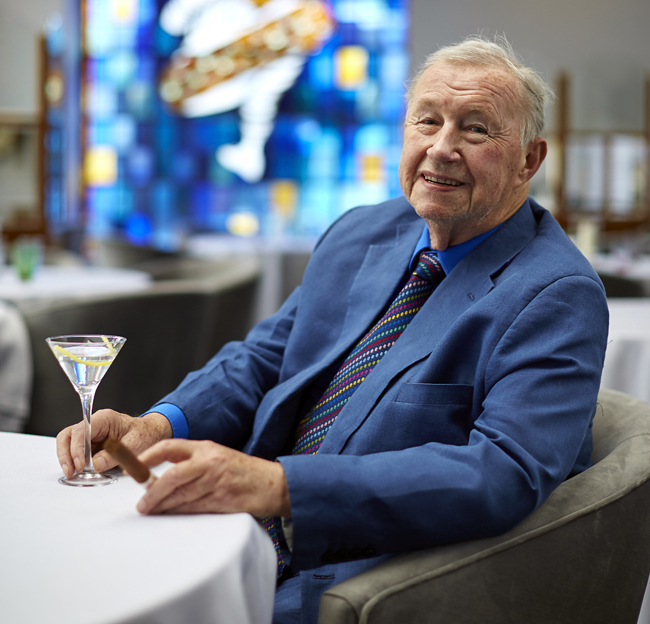
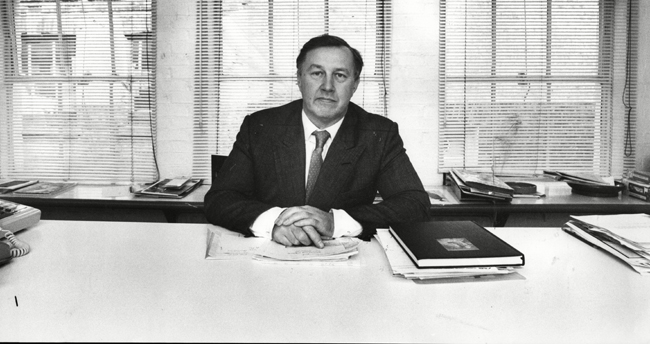
According to Michel Roux Jr, Britain was a laughing stock when it came to food 50 years ago. He says: "People would come and visit London, come and see a show, go to the Tower of London and the Horse Guards Parade - and then scarper because the food was just awful. Now people are coming to London for a dining experience."
Roux Jr should know. He has run the world-famous Le Gavroche since 1991, when he took over the reins from his father, Albert, who established the restaurant in 1967 with his brother Michel Roux Sr. The impact of Le Gavroche on the London (and UK) scene has been immense. As well as being the first restaurant in London and the UK to win three Michelin stars, such significant figures as Rowley Leigh, Marco Pierre White and Gordon Ramsay to name but a few have passed through Le Gavroche's kitchens. It continues to shape the dining scene with a steady stream of ex-employees going on to open their own restaurants, including former sous chef Monica Galetti, who launched Mere in Fitzrovia in 2017.
"Training chefs and front of house is a very important part of the legacy that my father and uncle started," says Roux Jr. "But there have also been improvements in produce; inspiring and encouraging farmers and smallholders to concentrate on quality and just push that bar up of British produce. In the 60s and 70s, it definitely wasn't at the level it is now."
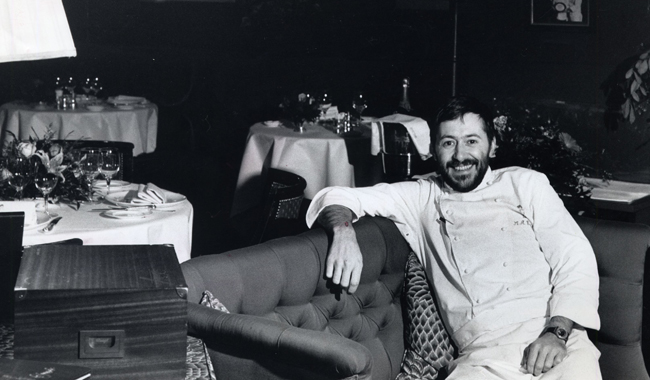
The restaurant revolution begins
A decade after Le Gavroche revolutionised fine dining in London, Peter Langan and actor Michael Caine, in partnership with Richard Shepherd (who, in 1975, while at the Capital hotel in Knightsbridge, became the first British chef to win a Michelin star), opened Langan's Brasserie and laid the foundations for the democratisation of restaurants that has become a major aspect of today's scene.
Shepherd, whose menus (including English classics such as cod and chips and bangers and mash) were to prove highly influential, says: "The whole idea of Langan's was to try and bring a cafe society into London and bridge the gap between formality and informality. We wanted to create an environment where you could have a party at one table in black tie celebrating something next to a table dressed casually and it didn't look stupid. I tried to apply the principle that there was nothing wrong with English food, only that it had previously been prepared badly. I tried to use a French philosophy of giving it the respect it deserved."
London chefs in the 80s and 90s were reimagining traditional British fare. Anton Mosimann served bread and butter pudding at the Dorchester; Gary Rhodes' menus at the Greenhouse included faggots, fish cakes and braised oxtail; and there was Fergus Henderson's groundbreaking 'nose to tail' cuisine of bone marrow and spleen. These considered takes on British classics helped fuel the gastropub revolution exemplified by the Anchor & Hope.
Where Langan's led, others followed. Chris Corbin and Jeremy King launched Le Caprice in Piccadilly in 1981 and went on to reinvent the Ivy and make modern London restaurant history with the Wolseley.
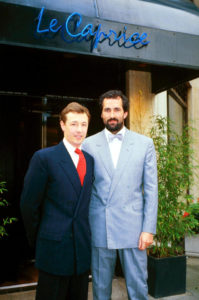
"Our working title was 'Joe Langan', denoting a fusion of Joe Allen and Langan's Brasserie," says King, who worked at Joe Allen, the famous theatreland bistro, while Corbin learned his trade at Langan's. "We changed the norm. Offering dishes as starters or mains was unheard of, and we upped the service levels by numbering seats for unobtrusive service. We were operating in a very modern idiom that was bewildering for many a Brit. It's where we started our ethos of giving the opportunity to spend but not making it mandatory."
London's next great leap forward came in 1985 with the opening of Alastair Little's eponymous Soho restaurant. Two years later saw the arrival of Conran and Simon Hopkinson's Bibendum, Marco Pierre White and Nigel Platts-Martin's Harveys, Ruth Rogers and Rose Gray's River Cafe, and Rowley Leigh's Kensington Place.
"It was Alastair Little and his ilk who started reinventing British food and reclaiming it from the genuflection towards France," says Guy Dimond, Time Out's former food and drink editor. "Little was the most prominent, but he was part of a movement that I coined 'Modern European' using British seasonal produce, but informed by Italian and other approaches. It became the dominant style over the next decade, adopted even by Francophile Terence Conran in his spate of high-profile restaurants."
Conran dominated the 90s with a string of audacious, era-defining projects, beginning with his gastrodome in Shad Thames in 1991, which included French fine diner Le Pont de la Tour, British brasserie Butlers Wharf Chop House, Italian Cantina del Ponte and the Blueprint Café. Conran's wildly successful revival of fashionable 1930s restaurant Quaglino's in 1993 with an unprecedented-for-London 450-seat capacity was a turning point for the capital, signalling a mass audience for quality dining for the first time.
"That period in the late 80s and early 90s was the most exhilarating of my life," says Conran. "We were fearless, ambitious and tremendously impatient and always seemed to have at least three or four big restaurant projects on the go all at the same time. It was like an explosion and became increasingly intense. It leaves me breathless thinking about what we achieved."
The cavernous 700-seater Mezzo in Wardour Street, headed by John Torode, and a second gastrodome at Bluebird in Chelsea confirmed Conran's place at the head of the London restaurant table for pioneering work that helped make London's restaurant scene what it is today.
Opened in 1994, Oliver Peyton's restaurant-cum-nightclub the Atlantic Bar & Grill was a hipper version of Conran's oversized vision, perhaps remembered more for its celebration of all things sybaritic than for its culinary contribution to the capital. Peyton's greatest contribution to the 90s (he has since gone on to transform public catering at the National Gallery, the Royal Academy of Arts, the Imperial War Museum, the Institute of Contemporary Arts and the Wallace Collection with Peyton and Byrne) has turned out to be Coast, the futuristic Mayfair restaurant where chef Stephen Terry's brigade included a young Jason Atherton, Ben Tish and Mark Sargeant, all of whom have gone on to do great things in London and beyond.
In 1992, Hong Kong-born restaurateur Alan Yau opened Wagamama, popularising Japanese noodles and anticipating the ramen craze of the last few years by several decades. It launched a career that has seen him create such influential and internationally successful brands as Hakkasan and Yauatcha.
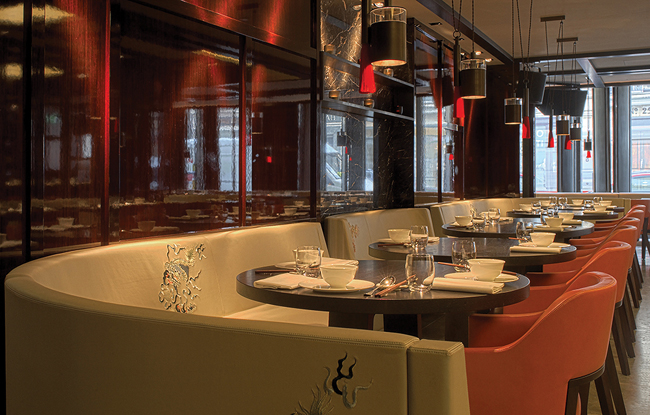
The new guard
The 90s also saw London hotel restaurants come to the fore. Previously, they had long been the home to some of the city's finest chefs, including Eugene Koffler and Anton Mosimann at the Dorchester, Silvino Trompetto and Anton Edelmann at the Savoy, Bernard Gaume at the Carlton Tower, Peter Kromberg at the InterContinental and Michel Bourdin at the Connaught.
But Nico Ladenis opening Chez Nico at Ninety at the Grosvenor House hotel in 1992, Marco Pierre White's move a year later from Harveys to the Restaurant at the Hyde Park hotel (now the Mandarin Oriental Hyde Park) and Pierre Koffmann relocating La Tante Claire from Royal Hospital Road to the Berkeley in 1998 paved the way for Gordon Ramsay's reinvention of grand hotel dining in the 2000s.
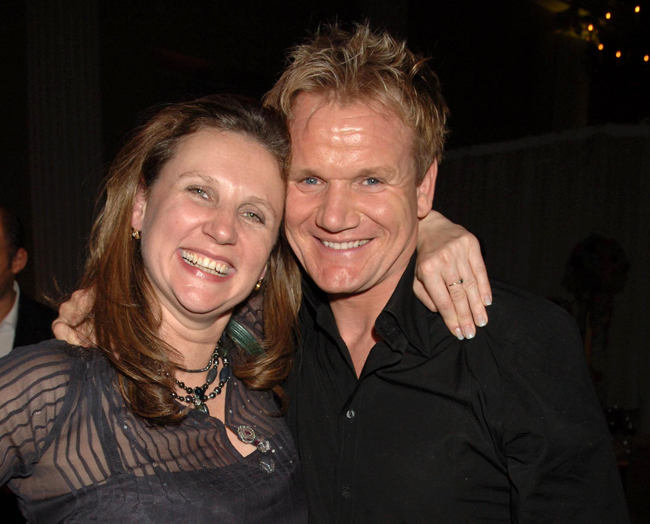
Having already won two Michelin stars at Claudio Pulze's Aubergine in Chelsea (opened in 1993) and three stars at Restaurant Gordon Ramsay, the chef routed the old hotel guard, beginning with Claridge's in 2001, installing Mark Sargeant as head chef. Ramsay then moved into the Connaught the following year with Angela Hartnett in the kitchen. In 2003, he appointed Marcus Wareing head chef of the Grill at the Savoy and relocated Petrus from St James's Street to the Berkeley where he also opened the Boxtree with Stuart Gillies (the former CEO of the Gordon Ramsay Group). Bravely eschewing the French classical cooking that had earlier dominated grand hotel cooking, Ramsay's celebrity allure paved the way for the likes of Heston Blumenthal to open Dinner at the Mandarin Oriental and Simon Rogan to launch Fera at Claridge's.
One of the most influential openings of 2009 came not from a chef but former operations director of Caprice Holdings, Russell Norman. He says: "I wanted Polpo to be a casual, scruffy, inexpensive, no-reservations neighbourhood joint where you could enjoy Venetian small-plates, classic cocktails and young Italian wines while having fun and not breaking the bank. I was fed up with stuffy restaurants where you had to book weeks in advance in order to be condescended to by the sommelier. We had no idea it would be as popular as it was, nor did we realise it would start a trend for similar outfits offering a high-quality, casual experience."
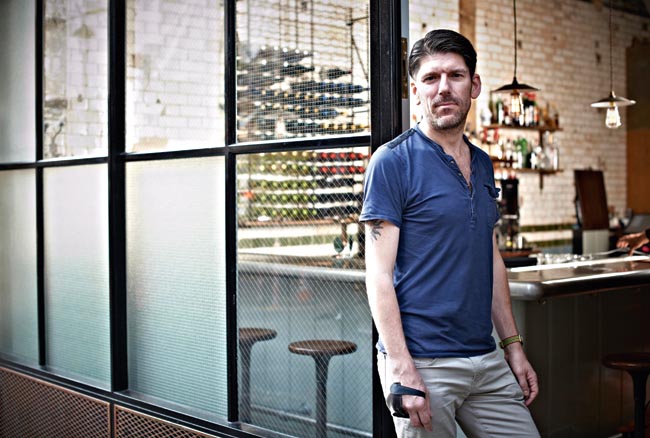
Democratisation of dining
Since 2011, street food has helped shape the London dining scene, keeping it relevant and at the global forefront. Jonathan Downey has been a key player, with initiatives such as Merchant Yard in Haggerston with chef Ben Spalding and more recently Street Feast, which has given birth to the likes of Breddos tacos, which now has restaurants in Soho and Clerkenwell. Other brands to emerge from the scene include Pizza Pilgrims, Meat Liquor and Pitt Cue.
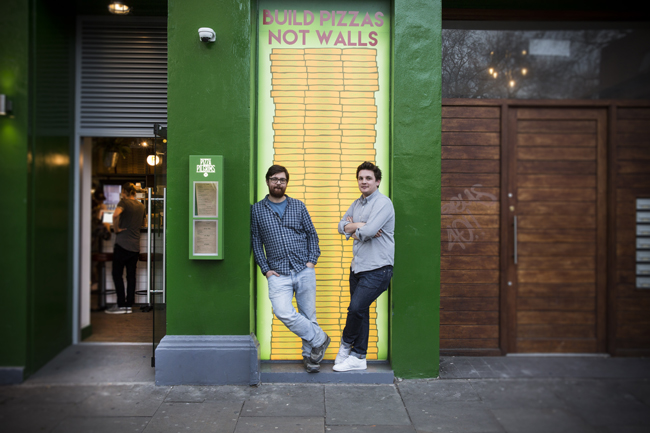
In the same year, Jason Atherton reimagined the notion of the celebrity chef when he opened Pollen Street Social and started to create the Social Company, a 17-strong international restaurant group with nine outlets in London. "The Social Company has made Michelin-starred dining accessible to everyone. For example, the Social Eating House offers a very informal setting with a vibrant Soho bar upstairs, but still serves outstanding Michelin food," says Atherton, who thinks that London has been crucial to establishing an international presence. "London is recognised all over the world, therefore having well-known restaurants in the capital really helps to get your foot in the door overseas."
There is no question that, in 2018, London is a thrilling place in which to dine, but with numerous high-profile closures over the last 12 months, including Dabbous, Les Deux Salons, Grain Store, L'Autre Pied, Foxlow, Dock Kitchen, Modern Pantry (Finsbury Square), the Roof Gardens and Bistrot de Luxe, the question remains: can it last?
"I'm very concerned that London is on a precipice,â" says Shepherd."There are so many factors that come into play, like overheads, rents, rates, staffing levels, wages and food and drink costs. There are too many restaurants and it's becoming increasingly more difficult now to make money."
The dreaded B for Brexit can't be avoided. Atherton admits that it's "definitely a concern and has stopped us progressing with a couple of new projects we had planned", and King says it can't be ignored: "Myopic, jingoistic, self-damaging and plain bonkers. Is London the world food capital? I suppose so, but we still need to bolster it with a greater general understanding of food rather than pure execution capability. I worry that many will start to flounder and suffer unless we can give security and a welcome to international workers who have always underpinned the restaurant business."
For Roux Jr, Brexit is just another barrier for Le Gavroche and the London restaurant scene to hurdle. "Gavroche has been through recession, depression, the Winter of Discontent and the three-day week when the lights were being switched off, and the IRA bombing campaign. We're still here. Sadly, there will be casualties, but the strong carry on and survive."
While some commentators have rushed to write the London restaurant scene's epitaph, there is much room for optimism. Soho House has just re-opened Soho landmark Kettner's; Robin Gill, one of London's most exciting and innovative young restaurateurs, relaunched the Manor in Clapham as Sorella in January, with a central London opening hot on its heels; and the much-lauded Kitty Fisher's will open sister restaurant Cora Pearl in Covent Garden in the spring.
"The next phase has started, hasn't it?" says Norman. "Look to James Ramsden [Pidgin], Will Lander and Merlin Labron-Johnson [Portland], Mark Jarvis [Anglo], Elizabeth Allen [Shibui], and Erchen Chang [Bao], to name just a few. I hope we will see a lot more from those established names still doing great things just below the neophile radar: Stevie Parle [Palatino], Tim Siadatan [Trullo], Sarit Packer and Itamar Srulovich [Honey and Co] and James Lowe [Lyle's]."
With London-based brands such as Zuma, the Ivy and Hawksmoor (due to open at New York's World Trade Centre in 2019) being exported internationally, and a constant flow of top chefs from around the globe attracted to the city, including Martha Ortiz from Mexico and Manish Mehrotra from India, it seems London is still calling loud and clear. Here's to the next half century.
The gastropub revolution
In January 1991, London helped change the face of dining across the country when David Eyre and Mike Belben took the lease of the dilapidated Eagle pub on Farringdon Road in Clerkenwell. Their simple formula of serving Mediterranean-inspired dishes freshly cooked in the tiny open kitchen behind the bar proved revolutionary and launched the capital's gastropub movement.
Employees left to open their own restaurants, starting with Amanda Pritchett at the Lansdowne in Primrose Hill in 1992, and Margot and Fergus Henderson, who set up the French House Dining Room in Soho (a precursor to the world-famous St John restaurant in Smithfield). More recently, Harry Lester opened the influential Anchor & Hope in Waterloo, former Eagle head chef Tom Norrington-Davies moved on to Great Queen Street, and at the Canton Arms, Stockwell, Trish Hilferty invented the foie gras toastie.
A passage to India
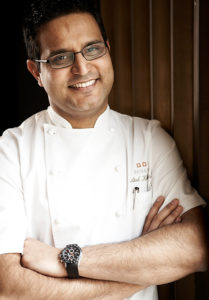
London has a special relationship with Indian food and has helped to elevate and develop the cuisine in a restaurant context. From as early as 1982, when Camellia Panjabi opened Bombay Brasserie, London restaurants have redefined the idea of Indian restaurants. Panjabi continued this with her sister Namita and her husband Ranjit Mathrani's MW Eat Group, which includes Veeraswamy (originally opened in 1926), Chutney Mary (1990), Masala Zone restaurants (2001) and Amaya (2004). More recently, the JKS restaurant group (which includes Trishna, Gymkhana and Hoppers) has made South Asian cuisine accessible to a new generation of London diners.
"It's easy to say that London has always led the rise of Indian food before India itself did for its own cuisine," says Atul Kochhar, who holds a Michelin star at Benares in Mayfair and who, in 2001, became the first Indian chef to win a star at Tamarind, along with Vineet Bhatia at Zaika in South Kensington.
"London being a global place has helped propel not only the cuisine but also the people involved with it. London will continue to lead the way for the evolution of Indian cuisine; it has made Indian cuisine a gourmet cuisine."




